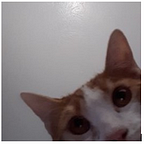My Hearing Journey.
Many of you have known me for decades, and you may have asked yourself at some point, “What is wrong with that woman?”
I’m different, I’m not like you. I’m not like most of the people you’ve met in your lifetime.
I’m severely deaf.
But for decades, if you had asked (and some of you did!) if I was hard of hearing, I would have said, “Yes, I’m a little hard of hearing, but mainly I don’t pay attention.” I knew that because it’s what my teachers told me growing up. “Kay,” they said over the years, “you’re so smart but you don’t pay attention…. you have your head in the clouds…. you have your face in a book…. you need to focus.” Of course, my mother would slap me upside the head and scream, “Get your head out of your ass!”
And when I “paid attention” then I would hear just fine, which validated, for decades, my belief that I was a little hard of hearing, but mainly I don’t pay attention.
My hearing journey began simply enough; my right ear was ringing. Actually, it’s been ringing for quite some time, but I’d managed to ignore the problem for a quite a while — I’m good at ignoring myself and my needs. A friend recommended an Audiologist and I thought, Well, I’m older now, and I’ve always been a little hard of hearing, so it can’t hurt to have it checked out.
The Audiologist was Robin Carson, at Carson Hearing Care. I’ve always been a little hard of hearing, I told her, but now my right ear was ringing. I was a little put off because she didn’t seem very interested in the tinnitus, and didn’t ask me any of the questions I expected her to. Instead, she led me to a small, sound proof room, just big enough for a chair, with walls that were covered in dark foam shaped pyramids standing end to end. She inserted ear buds in my ears and I had to stare at the corner and say “yes” every time I heard a beep. We did that for a long time, and it was pretty boring, because there wasn’t a lot of beeping going on.
Then there was a recording of a man’s voice, and I was instructed to repeat the words I heard. We did that for a long time too, but after just a few minutes, I knew I was flunking the test. The guy on the recording wasn’t a ‘good talker.’ He slurred his words and didn’t enunciate very well. I’m a classic, type-A personality — flunking tests isn’t what I do! I work for one of the largest employers in Fort Worth, Texas. In the last three years, I’d received two promotions — and three raises. I’m intelligent, not afraid of hard work, and I’m driven to excellence in everything I do. But as we stepped back into Dr. Carson’s office to look at the results, I had to fight the urge to apologize for performing so poorly on that last test — or asking for a re-test — or perhaps an extra credit assignment to supplement my grade?
Dr. Carson pulled up the results on her computer. There was a graph, with a banana shaped object at the top. This indicated the range of normal hearing. Underneath that normal range that were two, much thinner lines; the red line represented the right ear, and the blue line was the left ear. These lines that measured my hearing ability hovered just below the normal’ range of hearing, and then plunged downward on the graph.
All the way to the bottom of the graph.
In fact, at one point, the machine stopped recording how bad my hearing was. Instead, there were two futile looking arrows that pointed downward into no-man’s land.
I sat there in shock. No, no, I thought, she’s got that wrong. I knew I was a little hard of hearing, but it’s not like I had a hearing impairment. I hear sounds. The 600+ songs on my MP3 player attest to the fact that I can hear. The small red line was of particular concern; that line represented my good ear, the ear I used when I talked on the phone. How was it possible that the hearing was so bad in my good ear?
“You don’t have a good ear,” Dr. Carson told me.
